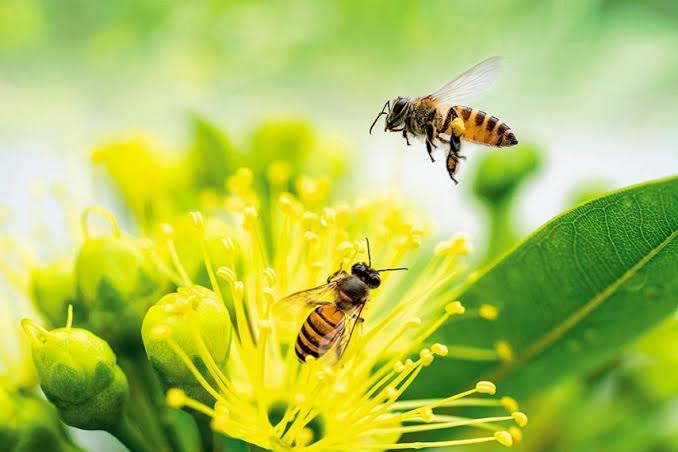If there is one thing that most people will readily agree on, it must be that the way that we currently feed ourselves is highly ineffective. Polluting. And, at the same time, incapable of providing sufficient food for the ever-growing population of the world. Agriculture has become synonymous with a best effort, especially now that many in the developed nations are facing a hefty shortage of qualified personnel and resources, while developing countries are overexploiting the land and human resources.
What is wrong with agriculture?
Even though some will try to nuance the above, it should - if anything - be amplified and emphasised at any given opportunity. The current state of farming is alarming and should worry all of us. While it is putting a huge strain on the environment and the world as a whole, it is painfully incapable of meeting demand. Something that must be changed if we are hoping to still be around in another couple of hundred years.
The growing demand for food and produce, coupled with painfully ineffective farming methods, have led to a continuous expansion of farmlands. In doing so, valuable land is wasted - including tropical rainforests and rare, irreplaceable habitats of endangered or near-extinct species. At the same time, the nitrogen pollution is far exceeding all set limits and rendering us dangerously close to becoming extinct as a species as well.
Bringing forth an agricultural revolution: coming up with new ideas
As such, considering the risks of climate change, the agricultural industry should be taking a good hard look at itself. Thankfully, plenty of innovative minds have already come together to find new, sustainable ideas of re-organising farming. Some of those ideas are merely improving the current state of agriculture, while others are looking to completely re-do the way that we use the earth to feed ourselves.
Improving the current state of farmingaffairs through automation
As for the first, merely improving the current way of farming, new technological innovations are involved. This is often described as technologies that will bring about the “fourth industrial revolution”, marrying various physical, digital and biological domains. Examples, championed by institutions such as the World Economic Forum, include next generation biotechnology innovations that seek to re-engineer plants, crops and animals.
Another huge pillar is precision farming, that seeks to optimise the use of water and pesticides. Smart systems and all kind of robots and autonomous vehicles will tackle the shortage of qualified personnel while ensuring that the entire food chain is traceable and transparant. At the same time, this allows for real-time farming that closely monitors and adjusts the land to minimise waste and prevent loss of crops. Drones will pollinate crops and distribute nutrients when and where needed. A smart tractor can take over a farmer’s job and prepare the soil, seed, weed, fertilise and harvest much more effectively.
The internet of things can be used in combination with blockchain to increase accountability while manufacturing synthetic foods, that can be used to personalise our nutrition. All in, it serves an agricultural industry that feeds more people while being less labour-intensive. Nothing new, yet better. And quite possibly an easier pill to swallow for the industry leaders.
Radically changing the way that we farm
Another proposal that is gaining steam is a radical solution that proposes a decentralised system (as opposed to the technological advances being driven from large companies). This uses the local, natural ecosystem to balance out nature, while producing sustainably. In this view, farming systems are based on the interaction between plants, crops, animals and the environment.
Effectively, this would mean that trees and shrubs might be planted amongst or around crops. That there would be a variety of crops and other plants placed in their natural habitat, reducing the need for artificial interference. This time, biodiversity would be agriculture’s greatest friend, using the natural habitat to deal with pests and increase the yield without damaging the soil.
This idea is often referred to as ‘agroecology’. These natural ecosystems are circular, matching the production of both crops and energy with a sufficient water and waste management system. The nurturing and creation of such agroecology areas is performed by local communities and allied researchers, taking the control of the food back to the people. Quite different from the idea of automation, that will lay control over the world’s food stock in the hands of a selected few.
It is time to take action
No matter what side you are on, it is important to realise that the time to act is today. Thankfully, most people seem to agree on this, with a selection of government officials and representatives from the civil society and private sector soon meeting in the United Nations Food and Agricultural Organization to discuss the future of farming.
The most hotly debated issue will be this question on who should be in control of farming: a selected few, who will drive innovation that will lead to robots producing artificial food for us, or in the hands of the local communities, who will find ways of farming in harmony with nature through circular systems embedded in the ecosystem. No matter what, it should be clear that, at least to some degree, we should all have a say in the future of our food. Those who have control over all the food in the world will find themselves in a dangerous position of power that should never have existed in the first place.
By Wandera . S .Alexander
swtxander.blogspot.com
alexanderwander14@gmail.com
African Food Security and Climate Army
Fika Afrika Advocacy Foundation
National Environmental Students Organization
The hive Uganda
My environment is my Responsibility
Iam a student for Nature
+256773545347/+256704952509



Comments
Post a Comment